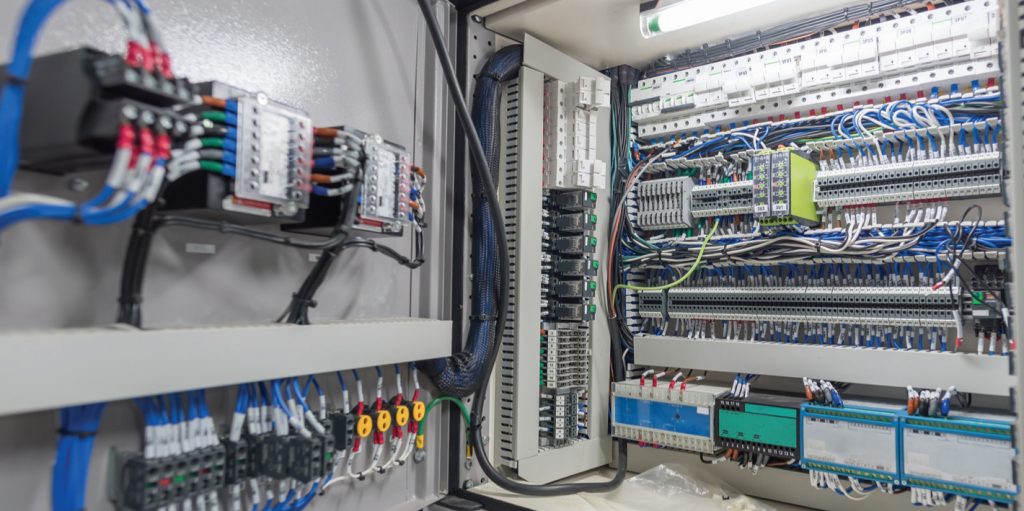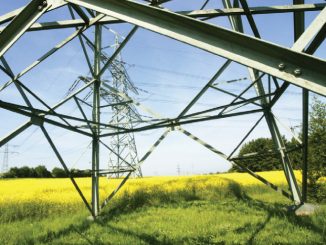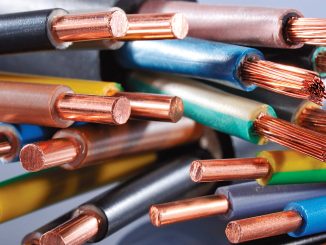
India’s electrical equipment industry has been growing steadily over the past few years with the major growth drivers being the cables and switchgear markets. Switchgear is classified as low voltage (LV), those having ratings of below 1 kV and including air circuit breakers, moulded case circuit breakers, miniature circuit breakers, residual current devices, contractors and relays; medium voltage (MV), with ratings between 1 kV and 33 kV and including air-insulated switchgear (AIS), vacuum switchgear and gas-insulated switchgear (GIS); and high voltage (HV), with ratings of 66 kV and above, and including AIS and GIS.
Based on the medium used to interrupt the current, the switchgear can either be a simple open-air isolator switch, or it can be insulated by some other materials. The switchgear industry in India mainly covers LV switchgear products. As per the construction type, switchgear is classified as indoor, outdoor, industrial, live-front, dead-front, open, metal enclosed, metal-clad and arc-resistant.
Switchgear across all voltage levels has witnessed technological advancements in line with planned developments envisaged by state and central utilities. These technologies are aimed at catering to the demand for smart grid and ultra-high voltage (UHV)-based equipment. Industry players are constantly trying to develop different kinds of switchgear that is more compact, reliable and environment friendly, and require minimum installation and commissioning time.
Power Line takes a look at the key emerging technologies in switchgear…
Gas-insulated switchgear
Recent years have seen a rise in the usage of GIS over AIS. Due to the scarcity of land, particularly in densely populated urban areas and hilly areas, there is an urgent need to reduce the land requirements for setting up distribution and transmission systems. To this end, the usage of GIS has gained popularity. In GIS, sulphur-hexafluoride (SF6) gas is used, which reduces the distance needed between active and non-active switchgear parts, resulting in lower space requirements, making these ideal for urban areas. The other advantages of GIS include their small sizes, high modularisation, high safety index, lesser maintenance requirements, and the ability to resist vibration and avoid electromagnetic pollution. GIS also offers protection against environmental effects like salt deposits in coastal areas, sandstorms and humidity, since all its parts are contained in a metal enclosure. Although the cost of GIS is more than that of AIS, it proves to be more economical, considering the land coverage, construction and maintenance costs, and better performance. With the increase in voltage, the ratio of investment required for GIS to that required for regular switchgear decreases.
Air-insulated switchgear
AIS is popular where space restrictions and environmental circumstances are not an issue and is, hence, the primary choice for areas with extensive space. With quality design, the system is viable owing to the low construction costs and low cost of switchgear. AIS has easy maintenance as all the equipment is within view and it is easy to notice and attend to faults. However, it is vulnerable to faults since the equipment is open to external elements such as human intrusion, pollution, deposition of saline particles, lightning strikes and extreme weather conditions. Thus, continued monitoring and maintenance are essential to deliver reliable energy to consumers in a safe manner.
Hybrid switchgear
Utilities are moving towards hybrid switchgear to take advantage of both AIS and GIS technologies as these strike a balance between the cost of land and the facility construction cost. Wherever there is a lack of space, in regions where smaller-scale transformer substations prevail and in industrial plants in particular, system operators tend to rely on space-saving outdoor switchgear. Hybrid switchgear is compact with the functionality of the substation switch-gear integrated in a gas-insulated enclosure. With the hybrid switchgear, the bay length is reduced as circuit breaker and the disconnector earth switch functions are integrated into one module. This gives an overall reduction in the area required for the substation. The hybrid design makes use of traditional air-insulated busbars to connect with other equipment in the substation while enclosing the following bay functions in a single-phase gas-insulated housing. Hybrid technology is considered to be the most reliable and cost-effective solution for new installations, as well as for expansions or replacement of existing substations. Further, due to the use of SF6 gas for encapsulation, the maintenance of hybrid switchgear is simple and is not required to be undertaken very frequently. This switchgear can be installed speedily, a growing requirement today when the time to execute a project is reducing.
Intelligent switchgear
A key technological development in this space is that switchgear manufacturers have started leveraging the internet of things (IoT) to enable real-time information flow, improved predictive diagnostics that leads to higher energy efficiency and better reliability of the power infrastructure. This intelligent switchgear can connect with the internet and provide comprehensive monitoring and protection functions as well as measure all electrical parameters in real time to remote monitoring systems. Intelligent or smart switchgear has built-in protection and control intelligent electronic devices (IEDs) in their switchgear solutions. These new IEDs, combined with the latest information and communication technologies, form a base for enhanced protection, control and monitoring. An intelligent switchgear overcomes the disadvantages of common electric switchgear power systems by performing functions such as system diagnosis, electric fire prediction and prevention, and electric power demand prediction. The demand for smart switchgear is expected to rise further with the 100 Smart Cities Programme announced by the government. These cities will be built with geographic information systems-based town planning, using advanced ICT technologies that will feature smart switchgear.
Ultra-high voltage switchgear
UHV switchgear play an integral part in several emerging power trends, such as compact and intelligent substations, high voltage direct current (HVDC) and ultra high voltage direct current (UHVDC) transmission links, integration of renewable energies and the evolution of stronger, smarter and more flexible grids. Worldwide in the transmission segment, utilities are moving towards UHV. Such developments necessitate the use of high voltage switchgear of corresponding ratings. In India, the first +800 kV HVDC link (Biswanath Chariali-Agra) was commissioned in September 2015 by Power Grid Corporation of India Limited. Thus, the adoption of newer tools will be driven by the transition to advanced technologies such as UHV transmission corridors and smart grids.
Conclusion
The switchgear industry’s growth has so far been due to the strong demand for LV and MV switchgear from distribution and low voltage transmission consumers. In these segments, the market has a large number of domestic suppliers that compete with global majors on prices. However, going forward, the demand for HV and UHV switchgear is expected to drive industry growth, given the government’s thrust on ramping up the transmission and distribution infrastructure through various programmes such as Power for All, the Integrated Power Development Scheme, and the Deendayal Upadhayaya Gram Jyoti Yojana. In addition, with significant renewable energy-based capacity expected to be commissioned in the coming years, and given its intermittent nature, switchgears would be pivotal for ensuring that the networks operate in a synchronous manner with minimum faults.




